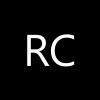Context
For economic and environmental reasons, rational management of N fertilisation of open-field main crops remains a major topic in crop production systems. Recent forecasting systems or decision support systems for crop nitrogen fertilisation at field scale largely integrate the factors acting on soil nitrogen supply and crop nitrogen needs. However, accurate quantitative assessment of these two main terms of the nitrogen budget for the plant-soil system is not possible at sowing time. So in-season measurements of plant nitrogen status appears as a realistic alternative to overcome this and to detect the need for supplementary application quite early in the growing season. Different invasive or non-invasive tools have been developed these last 10 years for this purpose. Sinds 1997, researches are conducted on plant sap nitrate concentration (Nitrachek), on leaf chlorophyll content (chlorophyll meter) and on biomass light reflectance (Cropscan, GPN). The practical use of such tools is developing world-wide. Their potential application in our cropping areas has to be assessed and disseminate continuously.Objectives
Objectives are to test the potential and the conditions for practical use of tools aimed to assess in situ crop nitrogen status. First step of the procedure is the check four main characteristics of the tools: - Sensitivity (early detection of a deficiency of nitrogen in the plant) - Specificity( measurements should ideally be exclusively related to plant N concentration) - Accuracy (precision of the measuremenst and low variation between measurements) - Feasibility (information should be rapidly available, in a simple way, and cheap in procedures and material). The use of such tools requires the set-up of threshold values of the measured variable to detect the need for supplementary nitrogen. Then, such values also need to be validated in commercial fields. Final step is to propose a practical procedure for use of the tool, alone or as a part of a global decision support systems.Description of tasks
The evaluation of the methods requires to install multi-annual field trials for the concerned crops. Trials include increasing nitrogen rates and varieties. Weekly sampling of plants and soil are combined to plant measurements with the tools. Threshold values are determined on agronomical and physiological bases specific to each plant species, and are validated in commercial field trials.Expected results
From 1997 to 2004, trials have been conducted with a chlorophyll meter (Hydro N tester, HNT) on potato crop. The use of HNT has been integrate in a complete innovative strategy for the management of N fertilisation of the potato crop (published in *). Other tools (Cropscan, GPN), based on the measurement of the light reflectance of the biomass and usable in the potato strategy, are currently studied. More recently, trial with HNT, Cropscan and GPN have started on winter wheat, spinach and curled-leaved endives.Contribution
Organisation and coordination of research, trials management, results analyse and diffusion, reports, scientific and technical publications.
NIR plant analysis for nitrogen content.
Partners
SCRI (Scottisch Crop Research Institute), UK Wageningen UR (PRI, Plant Research International), NL Arvalis, Institut du Végétal, F UCL (Unité de Géomatique) Louvain-La-Neuve, B FIWAP asbl (Filière Wallonne de la Pomme de Terre), B CMH (Centre Maraîcher de Hesbaye), Waremme, B CIM asbl (Centre Interprofessionnel Maraîcher), BCRAW off coordinator
GOFFART Jean-Pierre AS
Chef de Travaux
Rue du Bordia, 4
B-5030 Gembloux
Tél : 00 32 (0) 81 62 50 04
Fax : 00 32 (0) 81 61 41 52
Funding
- CRA-W - Walloon Agricultural Research Centre
- SPW - DG Foreign policies
- DGARNE



